How much can you fit in one day in Istanbul? Today we did the walking tour of the historical sites of Sultanahmet, and it’s hard to believe how much you can pack in when you have to!
Our tour started with the Topkapi Palace, established on the top of one of the 7 hills of Istanbul in 660BC by the Greeks.
The palace is unassuming from the outside, but when we passed through the first of the three gates the area opened up to a stunning garden, filled with tulips. This was the public area of the palace, with a large courtyard that the local people would have been able to access.
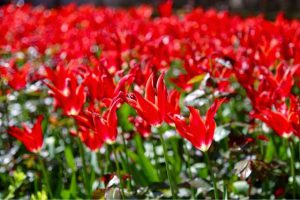 The gates to the second courtyard were only accessible to Ambassadors and Statesmen for official business. This was the ceremonial courtyard in the palace, and could be viewed from the ‘Justice Tower’. The courtyard was used for everything from funerals, to the annual Baclava ceremony on the 15th day of Ramadan, where huge trays of Baclava were handed out to each of the 400 guards in the palace. No wonder they needed 800 people in the kitchen!
The gates to the second courtyard were only accessible to Ambassadors and Statesmen for official business. This was the ceremonial courtyard in the palace, and could be viewed from the ‘Justice Tower’. The courtyard was used for everything from funerals, to the annual Baclava ceremony on the 15th day of Ramadan, where huge trays of Baclava were handed out to each of the 400 guards in the palace. No wonder they needed 800 people in the kitchen!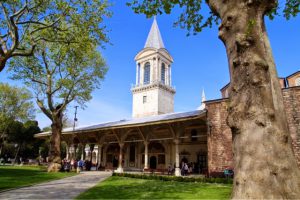 The area also included the harem, filled with concubines who were carefully scrutinised by their potential mother-in-law, trying to identify the most beautiful and hard working.
The area also included the harem, filled with concubines who were carefully scrutinised by their potential mother-in-law, trying to identify the most beautiful and hard working.The third gates led to the ‘Enderun’ or inner palace – the Sultan’s private area. Future Statesmen also lived in this area, young boys who were brought from the country and through initial training had proven themselves to be smart. Those that didn’t fare well in the early training were sent to the army, but their names were changed so they could never return to their family.
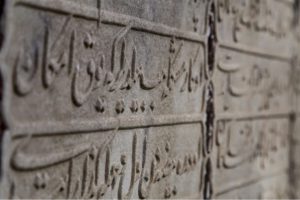 The buildings in this area all featured the beautiful ceramic tiles that Turkey is known for. The blue geometric patterns that adorn every wall, and are so well preserved or restored.
The buildings in this area all featured the beautiful ceramic tiles that Turkey is known for. The blue geometric patterns that adorn every wall, and are so well preserved or restored.Next stop, the Underground Basilica Cistern – one of the most amazing sites in Istanbul. This was built by the Romans in the 6th century to store water, particularly during the winter months. This enormous underground space was filled with up to 100 000 tonnes of water, filled via the aqueducts. It was turned into a museum in 1985, with the 336 columns now lit up to create a stunning underground effect.
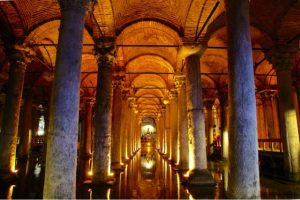 The Hippodrome connects the main sites in the Sultanahmet, and was the main horse and chariot racing arena (hippo – horse, drome – racing), and extends 450m from Hagia Sophia to the University. Racing used to occur 8 times per day – 4 in the morning, 4 in the afternoon, and would be viewed by the imperial family.
The Hippodrome connects the main sites in the Sultanahmet, and was the main horse and chariot racing arena (hippo – horse, drome – racing), and extends 450m from Hagia Sophia to the University. Racing used to occur 8 times per day – 4 in the morning, 4 in the afternoon, and would be viewed by the imperial family.There are a number of monuments down the middle of the Hippodrome, including this Egyptian obelisk from 1493BC. When this gift was first sent from Egypt it was significantly taller, but there are markings on the base that show how it was broken during the month-long trip (only a couple of kms though!) from the port to the Hippodrome.
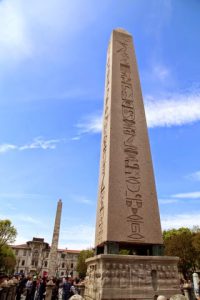

The Blue Mosque is one of the most visited and recognisable sights in Istanbul. Officially known as the Sultanahmet Mosque, it is known by tourists as the ‘Blue Mosque’ due to the 21 000 blue tiles that cover the interior walls. It’s one of the largest of the 3000 mosques in Istanbul, with the second largest prayer space.
 The Blue Mosque is still used for prayer, but thousands of tourists also trample through it every day with head scarves on, shoes off, and cameras clicking. In some ways, this made it feel quite disrespectful, but it’s one way to demystify the Muslim faith.
The Blue Mosque is still used for prayer, but thousands of tourists also trample through it every day with head scarves on, shoes off, and cameras clicking. In some ways, this made it feel quite disrespectful, but it’s one way to demystify the Muslim faith. As a predominantly Muslim country, the ‘call to prayer’ can be heard 5 times per day, the first around sunrise (before 5am), and the last around 10pm. Years ago, this call would come from atop the minorettes around the mosque, however today a PA system does the job, however every call is still live – never pre-recorded. Muslims then come to the mosque, clean their face, arms and feet, and pray. If a prayer is missed it can’t be made up later, and it’s believed that you won’t be as successful as you might have been otherwise.
The Hagia Sophia (Aya Sofya) is a fascinating space, built by Constantius in 360, destroyed by fire, and then rebuilt by Thosidius II in 415. Originally this was a Christian place of workshop – the first church with a central dome, a magnificent structure that symbolised the cosmos, and 2 supporting domes.
When the Hagia Sophia was converted to a mosque, thankfully the decorative and figurative mosaics were covered by a thin layer of cement, rather than destroyed. It was used as a mosque until 1931 when Ataturk declared that the space should be secular. It’s quite strange to see the combination of Muslim and Christian symbolism in one place!
Today the Hagia Sophia is a museum, and is on the UNESCO World Heritage list, along with countless other sites in Turkey.
Today the Hagia Sophia is a museum, and is on the UNESCO World Heritage list, along with countless other sites in Turkey.
In the centre of the floor of Hagia Sophia was this large mosaic made from different types of marble – who would have thought there were so many!
Final stop – The Grand Bazaar, built in 1461. 32000 m2, 60 streets, 4000 shops (2500 of which sell jewellery) and more scarves, rugs, pottery, turkish delight and cheap souvenirs than you can imagine.
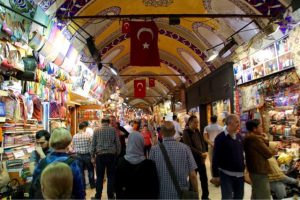 Despite their being millions of people in Istanbul, and thousands of tourists, we were reminded how small the world is when we bumped into a friend from Brisbane, Michael Carr & his son Mason three times during the day, including in the maze of the Grand Bazaar. Last time we saw ‘MC’ was in January when we bumped into each other on holidays in a little town in NZ… Crazy!
Despite their being millions of people in Istanbul, and thousands of tourists, we were reminded how small the world is when we bumped into a friend from Brisbane, Michael Carr & his son Mason three times during the day, including in the maze of the Grand Bazaar. Last time we saw ‘MC’ was in January when we bumped into each other on holidays in a little town in NZ… Crazy!You can’t leave Turkey without experiencing a Turkish bath or ‘Hammam’ apparently, so as good tourists we obliged this evening. Certainly an experience, but not one that you want a camera for…
Love M & theBunch xxx
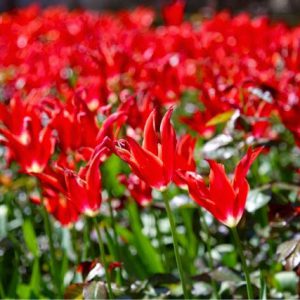
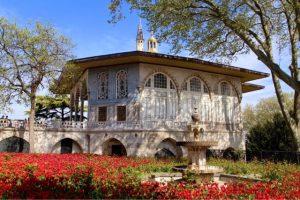
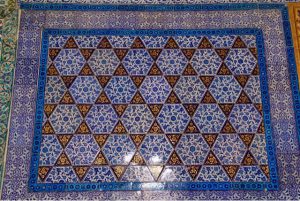
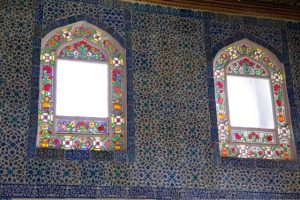
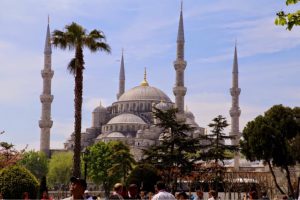
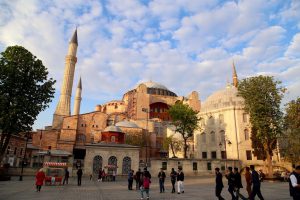
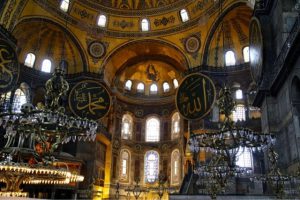
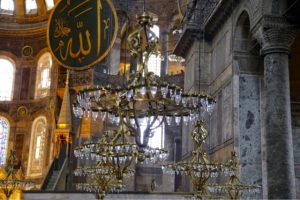
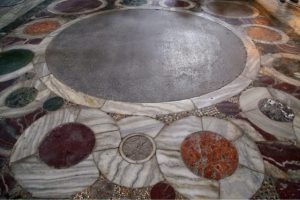
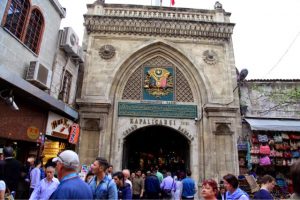
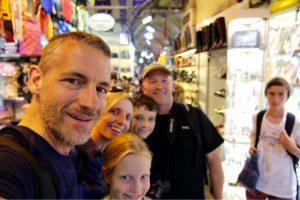
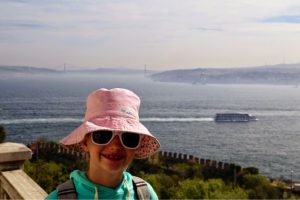
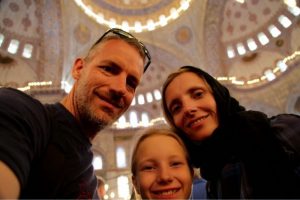
Comments are closed